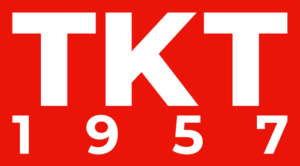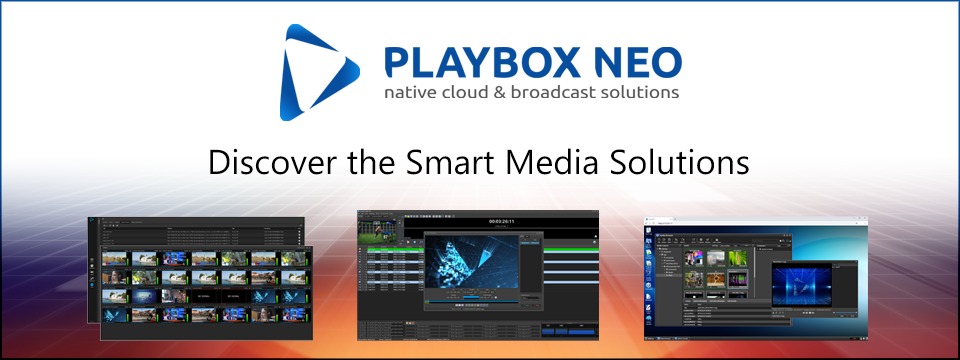
Interview with Hugues Lambert, VP Sales, CEE, Russia & CIS at EVS.
What has been the impact of COVID on your company and its key customers?
EVS pretty much astonished me, to be honest. Our CEO is really, I could say, quite far-sighting. EVS so far has anticipated most of our government regulations. We are also an international company which means that we have seen the COVID situation pretty much directly. We have a team, of course, in Hong Kong, we have a team in China, and, obviously, we had already started to talk internally about the COVID situation even in November-December of 2019. We were quite quick to pay attention, reduce trips and get prepared.
I remember at our Channel Partners gathering in the end of 2019 we were already trying to anticipate social distancing – avoid shaking hands, keep a safe (1,5 m) distance and so on; even before people were starting to talk about it in the local government. So the company was ahead of these rules that we have nowadays in our lives.
The weekend before the confinement was announced, our Human Resources was advising everyone that could – without affecting operations – to work from home, if not full-time at least partially. And for us, of course, it doesn’t make any difference – the commercial team used to be either in the air, on the road or abroad, so it didn’t change much for us, we already work with a lot of remote production tools. Everybody had been working a day or two remotely before, so I think it was not really an issue, it was finally quite straightforward to have the majority of the company working remotely.
So all the logistics and production teams were organizing shifts, and EVS made that very quickly.
The challenge we had at that time is that when everything was happening, we still had commitments for the Olympics, because they only got canceled at the last minute. We still had the commitment to deliver quite a lot of hardware, because it enables the remote access. So all the logistics and production teams were organizing shifts, and EVS made that very quickly. We were ready to ship until the delay was enacted, and of course it’s not up to us to make the decision. If the customers say we go, then we have to be ready. We were running till the last minute, and then it finally got postponed to 2021.
We know that COVID has accelerated the trend of remote working. How was remote production influenced by this pandemic? And how does EVS help production teams all around the world to work – no matter where they were located?
Remote production was not something new. We already have quite a huge range of customers, and big events we were working on were already covering the globe. In a certain way, I would say, COVID changed nothing, it just highlighted the trends and pushed them in terms of priority. Technically, all the solutions were already being worked on, and we knew it was going in that direction. So, it was speeding up things, but not changing anything in terms of the direction we’ve already chosen.
I can’t miss out on a question about the acquisition of Axon, because it was made during the lockdown. Did this merger help to complement your portfolio of live production solutions and how?
Yes, you are absolutely right, nobody pointed out that fact before, but it is the most important step we have taken in terms of strategy in 2020.
Axon is still a very significant company, it’s around 80 people. EVS is about 500. So it’s not a small team, it’s not a small acquisition we did there. I think the very interesting thing with Axon is that when you look at their product range and when you look at the EVS product range, you will see that it has full complementarity. Compared to some mergers and acquisitions we’ve done on the market with some competitors, we were acquiring what we had before. At least for me sometimes it was pretty hard to understand the logic behind them. In terms of Axon it’s very easy – they do the infrastructure part.
EVS has been developing the Flow Orchestration Layer for the IP which is called Score Master. It’s a very advanced piece of software. For example, commercially, it sits between the physical layer where you have all the network switches and the top layer which is basically the control layer.
The Cerebrum part of Axon proposes a very efficient controller. Several of these systems are already deployed in Russia, because they were doing business in Russia before the acquisition.
The Cerebrum part of Axon proposes a very efficient controller. Several of these systems are already deployed in Russia, because they were doing business in Russia before the acquisition. But it means that now we are now also able to propose this bundle, combination of Axon and EVS – Cerebrum and IP flow, which is the new name of Score Master. So we don’t want to impose ideas across the board. Of course, for those who like to do that we will try to propose more interesting bundles which were not possible in the past.
Technical complementary is the first important point. Axon is also based in the Netherlands, close to Liege – a driving distance from EVS Media Infrastructure headquarters. It is not mandatory, especially now because everything is remote, but it is also quite important because we are very close to each other.
In terms of culture and priority, Axon products are also extremely reliable, you can ask many broadcasters in Russia or elsewhere who are using them. Each of their series is built like a tank, so it’s really built to last a lifetime. Their philosophy was to create premium super high reliability, and a lasting investment, not something to throw away after three years. The culture of the company is similar as well – putting the customers first in terms of service. All of this is very much aligned with the EVS way of thinking.
What is also ongoing in parallel is the further integration of products. We have a wide range of panels which are already available within the ex-Axon range, and these panels are also perfectly suited. So, we are implementing the protocol of these panels and the protocol of the DYVI together to offer a more cohesive ecosystem on the different product levels. We are strengthening the commercial part which will be done by the end of this year, and then we are also trying to achieve a lot of synergies which were initiated even before. The integration of Score Master and Cerebrum was initiated before we started this merger and acquisition, so that’s just a continuation of what we wanted to do.
And what’s next? What can we expect from EVS in terms of product releases and overall strategy over the next 12 months?
Before we talk about the product, allow me to talk a little bit about the infrastructure. It took some time to work out the new platform. That’s, of course, a lot of marketing, but it also means that EVS was not developing products anymore like we used to. Nowadays, we put the new infrastructure in place, and this infrastructure is called the VIA platform. We now have different modules, and these can be used in different products. At least we don’t develop things twice.
At the end of last year, we started to launch LSM-VIA, which is a very important product for EVS, but it uses the same technology. So now we have one infrastructure for the whole EVS ecosystem.
The first part was the IPD-VIA which is the solution for investing in postproduction multi-cameras. At the end of last year, we started to launch LSM-VIA, which is a very important product for EVS, but it uses the same technology. So now we have one infrastructure for the whole EVS ecosystem. This means that it will take a bit of time to put it into the different products, but after that it opens up a new perspective, when you start to leverage that common infrastructure. LSM-VIA was launched in November, so you can count on it being deployed this year. Across this year that’s going to be one of important products that will be running.
This year we are also launching our next generation of production asset management. Today we have the IP Director, who will stay for quite a while because it is a very natural and powerful product, which you can’t replace with the click of a finger. But, it is already complemented, so your tools are going to fit with it. The web access of the IP Director is basically on the new VIA technology architecture. This will continue to expand with IPD-VIA.
Then, several significant projects will be deployed this year on this next generation production asset management, so this year we decided to focus on a few early adapters because we want to give them the best service and accompany them for this quite important migration. Then, it will become more general in terms of product availability in the course of the next year.
This time evolution is also a very significant step that will be happening in the course of this year. Then, you have other different products which will also involve running into local and cloud processing. So, you will have the possibility to see new business models, not only investment but flexible licenses, which you can just select when you need it, also being able to afford it as a service in the cloud. That’s basically a different kind of solution.
One next question is about Artificial Intelligence. Comment on your forward-looking strategy in this area.
EVS has been among the first companies to invest in Artificial Intelligence, we work with different orientations on it. The first thing is focused on teaching some sports to Artificial Intelligence, that’s machine learning. You can improve this in two directions – you can improve the pupil which is learning, and you can bring more content to the pupil.
It’s very easy to go into that, but if you want to reach the level of accuracy required by FIFA – which has to be approved by different laboratories and so on – the details are crucial.
The first focus was football because, obviously, it is still a very important sport in terms of monetization – that was our first priority. We’ve been doing quite a lot in football. Video assistant referee systems with Artificial Intelligence driven offside lines – that was the first product where EVS moved AI out of the labs and into products. Of course, it’s very easy to go into that, but if you want to reach the level of accuracy required by FIFA – which has to be approved by different laboratories and so on – the details are crucial. Sometimes you can spend a lot of R&D finalizing this, but it is important to make sure that it reaches the level of accuracy our top customers are expecting from us. So, we started with football, and after we have been teaching new sports. We did basketball, and others are coming up.
We have also been developing AI in terms of the product OVERCAM, it allows Artificial Intelligence to follow and drive PTZ camera control. We will show some more details of the difference between EVS and others – it’s the latency, the speed on which the system can rely. It’s also about the details. You have different operators. You can have good operators or cameramen, and then there is also a question of speed which you can follow to anticipate the tracking to make it smooth.
We’ve been continuing to develop new products based on AI and I’ll show you some examples of XtraMotion. By incorporating the images, we are making a “hallucination” of them. It means that the system is recreating your images to retrigger a super motion camera out of a normal camera, or trigger an ultra-motion camera out of a super motion camera. And that is also something which you can leverage for archive content, which is very appreciated, because even in sport archives you can apply this technology on that basis. For example, XtraMotion will also be accessible as a service. That’s something which is based in the cloud and can be seamlessly integrated within the production workflow.
The technical director at Slomo.tv Igor Vitiorets said that his equipment is of the same level as EVS or even higher.
If he says so, I don’t want to contradict him.
But he also said that the price of EVS equipment is much higher than Slomo.tv. Can you comment on this point?
It’s hard to argue with that. Now, we have different ways to look at it. First of all – what do you do with the equipment, what is your ambition? If you just want to make a replay, if you want to integrate it as an ecosystem in your outside broadcast department with your studios… Remote production is not only about bringing everything into a central place and making production at that place. It’s really all about using everything together to create leverage, integrating the data and digital instruments.
They say that they pick EVS because it is flexible – we can do entertainment, political shows, which is extremely critical because it works like it’s bulletproof, and we can repurpose whatever type of production we have.
Then we have the kind of customers that worry about the budget. They say that they are not able to make a mistake and make a bad investment. They say that they pick EVS because it is flexible – we can do entertainment, political shows, which is extremely critical because it works like it’s bulletproof, and we can repurpose whatever type of production we have.
We also have customers who say that they are on a budget, but the more important factor is issues – if there are issues, this causes downtime, and causes their reputation. At the same time, what is the lifetime of such equipment? Sometimes after two-three years something has to be replaced because it’s not upgradable, because the company doesn’t give a shit about the compatibility of the support.
The last point again is the value. If you buy EVS, you keep it for 10 years. Even after 10 years, you will be astonished about the remaining value of the system which is still running. You will still be able to resell it at good value. If you make the difference between the purchase and the self-price, it is pretty much like a German car. Why are German cars so popular for leasing? Because it’s not the cost of the equipment, it’s the cost of the ownership. Honestly, you need to have a company that is able not only to see the price of the equipment, but have a more global vision. What’s the price of operation? What’s the satisfaction of the users? What is the importance of their production, their ambitions in terms of developments? If you put all these together, EVS is usually considered to be quite good value. And if you really are on a budget, we do not have a local solution, I have to admit.
Of course, everybody is looking for something top-of-the-range, do-it-all solutions, but we also have entry-level products like XT-GO. So if you have simple slow motions or just need two units, you can use and connect two XT-GO together. Thus that’s quite an honest price. If you don’t need the whole ecosystem leverage, it’s a serious alternative, companies on a budget should also consider it.


























